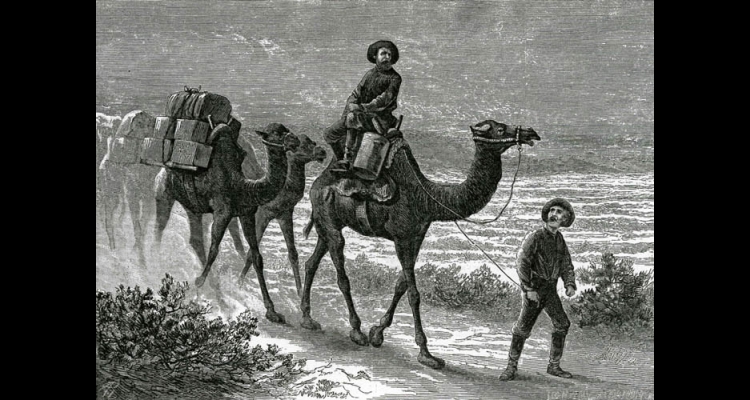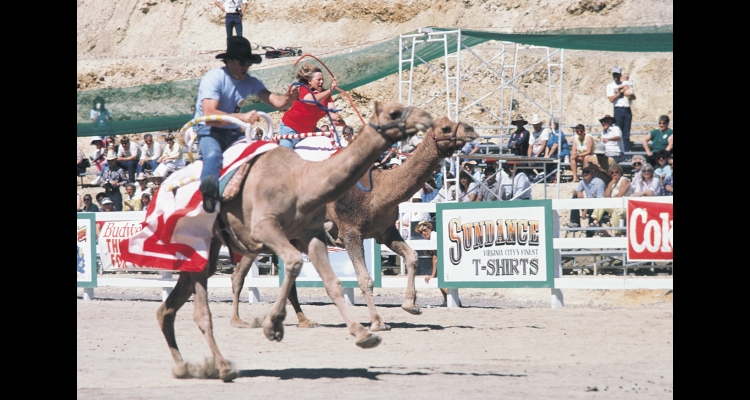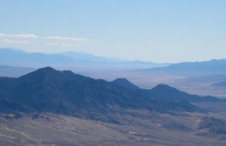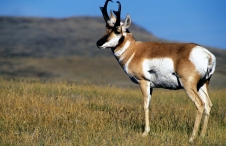Camels
In 1856, the U.S. Army experimented with the importation of Middle-Eastern Dromedary (one hump) camels. Lt. Edward F. Beale maintained the animals could haul materials for the military in the arid West. They could carry more than horse or mules, and they had a legendary ability to survive without much water. Beale and roughly thirty camels crossed the Colorado River into present-day southern Nevada in 1857, but his experiment eventually failed, and the army sold what stock survived.
There were other attempts at importing camels including the 1861 introduction into Nevada of nine Asian Bactrian (two-humped) camels. Three years later, Sam McLeneghan purchased ten of the Army's Dromedaries for hauling supplies in the territory. Camels brought salt to mills in both Virginia City and Austin.
The animals generally proved effective, but operators had to avoid paths with sharp rocks, and they found that camels frightened horses. In 1875, the Nevada legislature prohibited camels on public highways to safeguard horse traffic. This effectively ended the commercial use of camels.
Operators set many camels free while selling others to circuses. For decades, various people throughout the West reported seeing the wandering beasts throughout Nevada and the southwest. Although some of the initial accounts may have been based on reality, these stories eventually became part of western folklore.
Camels later assumed a different role in Nevada history and culture. In 1959, the revived Territorial Enterprise reported the results of a fictional camel race held in Virginia City. To the delight of residents, the San Francisco Chronicle reported the event as fact. The following year, actor-director John Houston, in northern Nevada for the filming of The Misfits, heard of the contest and became determined to ride in the "second annual" camel race. Virginia City held an actual competition, Houston won, and the annual camel races grew into a tradition celebrated to this day.
Article Locations
Related Articles
Further Reading
None at this time.





